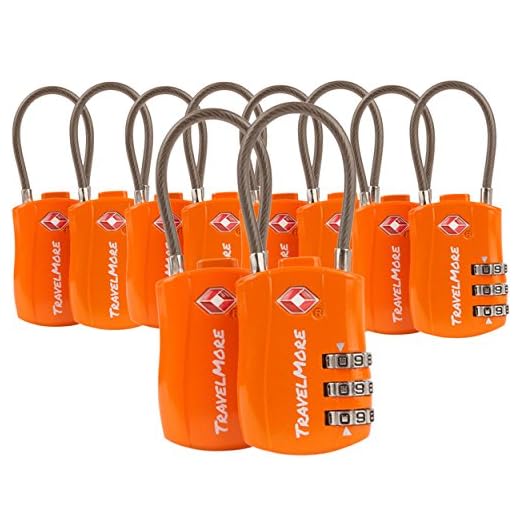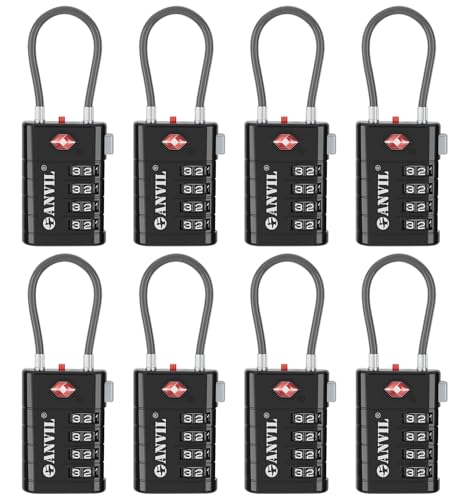





Choosing certified travel fasteners symbolizes a responsible decision for frequent travelers, as they offer a balance between accessibility and protection. These devices, designed for airport security, provide peace of mind, allowing authorized personnel to inspect bags without damaging the mechanisms.
The reliability of such fasteners often comes into question. Studies reveal that while they serve their intended purpose, their vulnerability to unauthorized manipulation raises concerns. A recent analysis indicated that many can be compromised using basic tools, emphasizing the necessity for enhanced security measures.
For optimal protection, travelers should consider investing in high-quality alternatives with additional features like reinforced materials and advanced locking systems. Combining these with thorough packing strategies can significantly deter potential tampering, ensuring your belongings remain safeguarded.
Evaluation of TSA-Compatible Lock Security
Security features of TSA-compliant fastening devices are a mix of benefits and limitations. While they allow authorized personnel access without damaging your belongings, they can be susceptible to bypass methods. Thieves can potentially use simple tools to open these mechanisms, as their designs aim to be accessible rather than impenetrable.
For optimal safeguarding of your items, consider high-security alternatives that offer more complex mechanisms. Additionally, utilizing multiple types of fastening devices can deter unauthorized access, as it requires different approaches to break into your belongings.
It’s prudent to avoid placing valuable items inside checked bags. Instead, keep essential and high-value belongings in carry-ons, where they remain within sight and control. Understanding the limitations of TSA-approved mechanisms is key to ensuring that belongings are kept as safe as possible during travel.
Understanding TSA Approved Locks
Choosing an approved fastening mechanism for your travel bags ensures access for security personnel without damaging your belongings. These mechanisms are designed with a universal key system, allowing authorized agents to open them using specialized tools, while deterring unauthorized access.
Key Features
Approved fasteners often feature a combination system or keyed entry, catering to diverse preferences. Available in various designs, they provide distinct visual markers that indicate compliance with safety regulations. When selecting a fastener, prioritizing durability and resistance to tampering is vital, as this helps maintain the integrity of your items.
Recommendations for Use
Regularly inspect your fastening system for signs of wear and tear, replacing it when necessary. In addition, consider utilizing multiple security measures, such as additional straps or cable ties, for enhanced protection. Make sure to review the guidelines provided by airlines regarding approved mechanisms to ensure compliance.
How TSA Agents Open Luggage with Locks
TSA personnel utilize specific tools to access bags secured with approved mechanisms. These tools include master keys designed to fit various lock models. Understanding how these methods work can provide insights into the effectiveness of such securing devices.
- Master keys are distributed to agents, allowing them to unlock devices without damaging the bag.
- In cases where a key is unavailable, agents may use other techniques, such as shim techniques or lock picking, although this latter method is rare for approved mechanisms.
The process of inspection emphasizes minimal interference with personal items, adhering to protocols to avoid damage. If you have concerns about the security of your belongings, consider packing valuable items within internal compartments, less accessible to casual thieves.
For those seeking alternatives, products such as high-quality digital surveillance options may help monitor your belongings remotely. A review worth checking is how you might evaluate the reliability of such systems through resources like this one: are digital watchdog cameras crappy.
Choosing the right securing device involves weighing convenience against potential vulnerabilities. Knowledge of how agents operate can aid in making more informed decisions about your baggage safety.
Security Risks of Using TSA Locks
Relying on TSA-approved securing mechanisms carries inherent vulnerabilities. While these devices promise convenience for agents during inspections, they also create opportunities for unauthorized access. Various tools exist that can easily defeat common locking mechanisms, allowing individuals with malicious intent to compromise belongings.
Key Risks to Consider
The first major concern lies in the design of these locking systems. Many approved variants utilize a universal key system accessible to authorized personnel, which inadvertently allows for potential exploitation by unauthorized individuals who may acquire or replicate such keys. Additionally, the physical material of these securing devices can be easily tampered with; low-quality metals and plastics can be broken or manipulated with minimal effort.
Compromised Privacy
Another significant issue is related to privacy. With a standardized method of opening these devices, travelers become susceptible to intrusion. Items of value and sensitive information are at risk, especially if the baggage is left unattended. Thoroughly evaluating the necessity of such securing methods is crucial; alternative strategies focusing on personal monitoring may offer better protection against theft and loss.
Alternatives to TSA Approved Locks
Consider using padlocks that do not have TSA approval but still offer robust security features. Look for locks with hardened steel bodies and shackle, as these can withstand cutting and prying attempts effectively.
Cable Locks
Cable locks provide flexibility and can be affixed to various items. They offer a lightweight solution and are less cumbersome while still delivering considerable protection against theft. Choose models with a combination mechanism for added convenience.
Biometric Locks
Biometric options offer advanced technology that utilizes fingerprints for access. Such locks ensure that only authorized users can gain entry, eliminating the need for keys or combinations. However, be mindful of battery life and ensure backups are available.
Best Practices for Luggage Security
Keep items organized within your travel bag using packing cubes. These not only maximize space but also make it easier to identify belongings at a glance.
Use Unique Identifiers
Tag all travel cases with unique identifiers. Consider using bright luggage tags or colorful ribbons to help recognize your gear quickly on the baggage carousel.
Consider Additional Protection
Invest in a high-quality travel bag with anti-theft features. Look for models equipped with lockable zippers and cut-resistant straps.
| Best Practices | Description |
|---|---|
| Organized Packing | Utilize packing cubes to keep items tidy and easily accessible. |
| Bright Tags | Use unique identifiers for quick recognition on baggage claim. |
| Durable Bags | Choose travel cases with advanced security features. |
| Insurance | Consider travel insurance that covers your belongings during trips. |
To learn about the optimal types of travel cases for those with mobility challenges, check out the best luggage for arthritics.
Enhance your overall travel experience by utilizing accessories like the best of times umbrella stand, providing additional shelter during transit.
FAQ:
Are TSA luggage locks really secure against theft?
TSA-approved locks offer a layer of security, but they are not foolproof. These locks can be opened by TSA agents using a master key during airport security checks, which means that if a thief has access to a master key or can pick the lock, your luggage could still be compromised. It’s advisable to use them as part of a broader luggage security strategy, such as ensuring your bags are not left unattended and keeping valuables in a carry-on whenever possible.
What should I consider when choosing a TSA luggage lock?
When selecting a TSA-approved lock, consider factors such as the locking mechanism, material quality, and ease of use. A good lock should be made of durable materials resistant to tampering and should feature a reliable combination mechanism or a sturdy key system. Additionally, it’s wise to check for security ratings and customer feedback to gauge their effectiveness in real-world scenarios. Finally, look for locks that offer a warranty or guarantee, as this may provide added peace of mind about the quality of the product.







